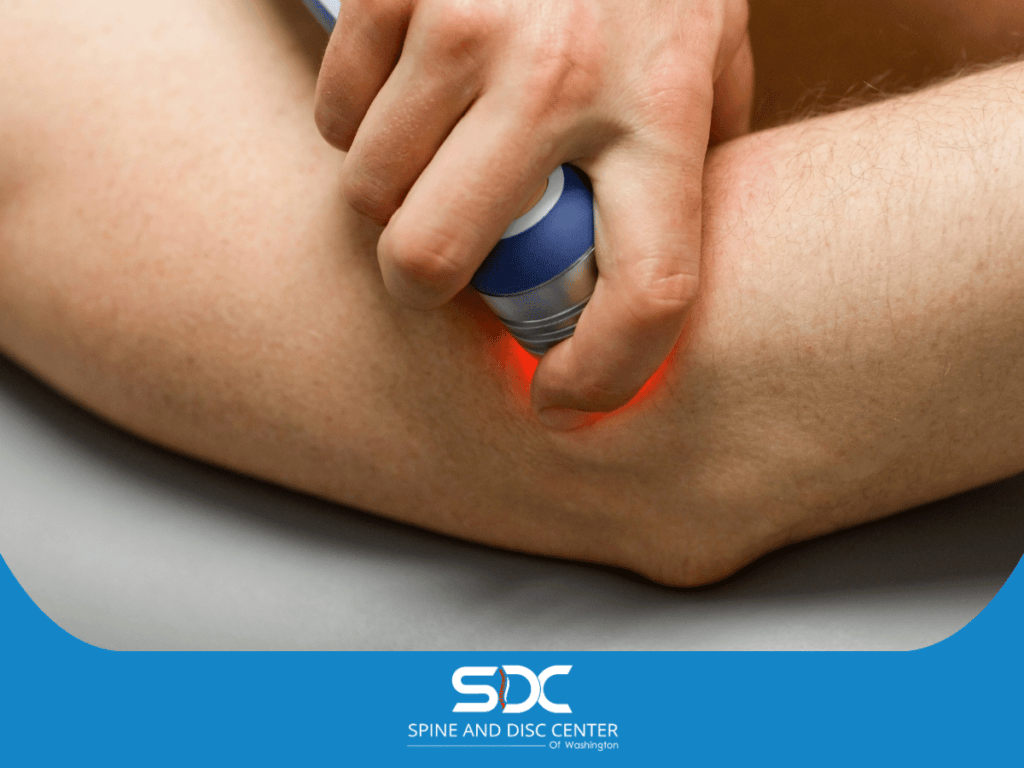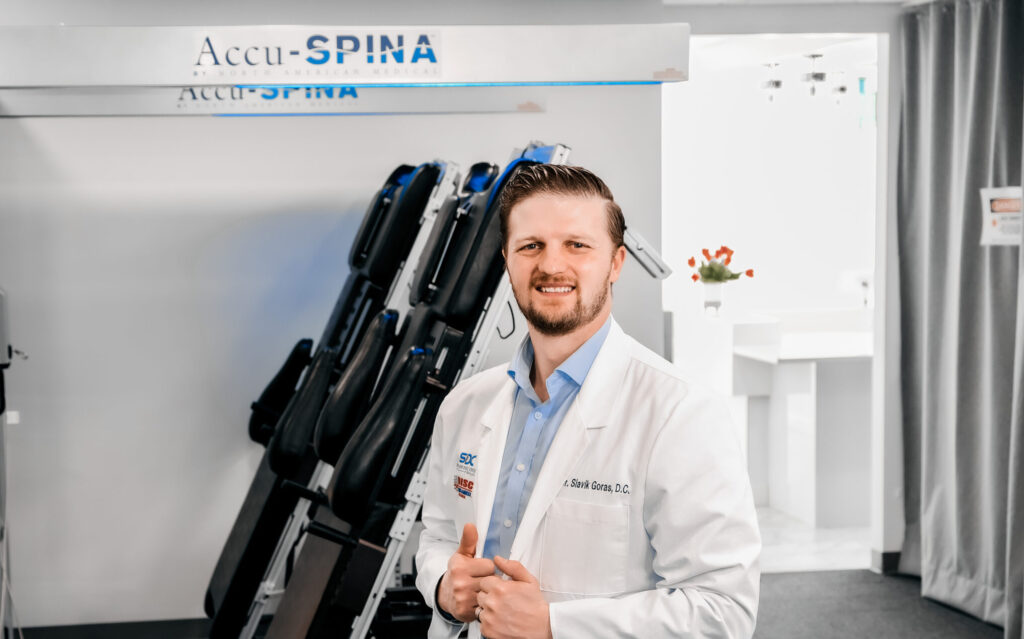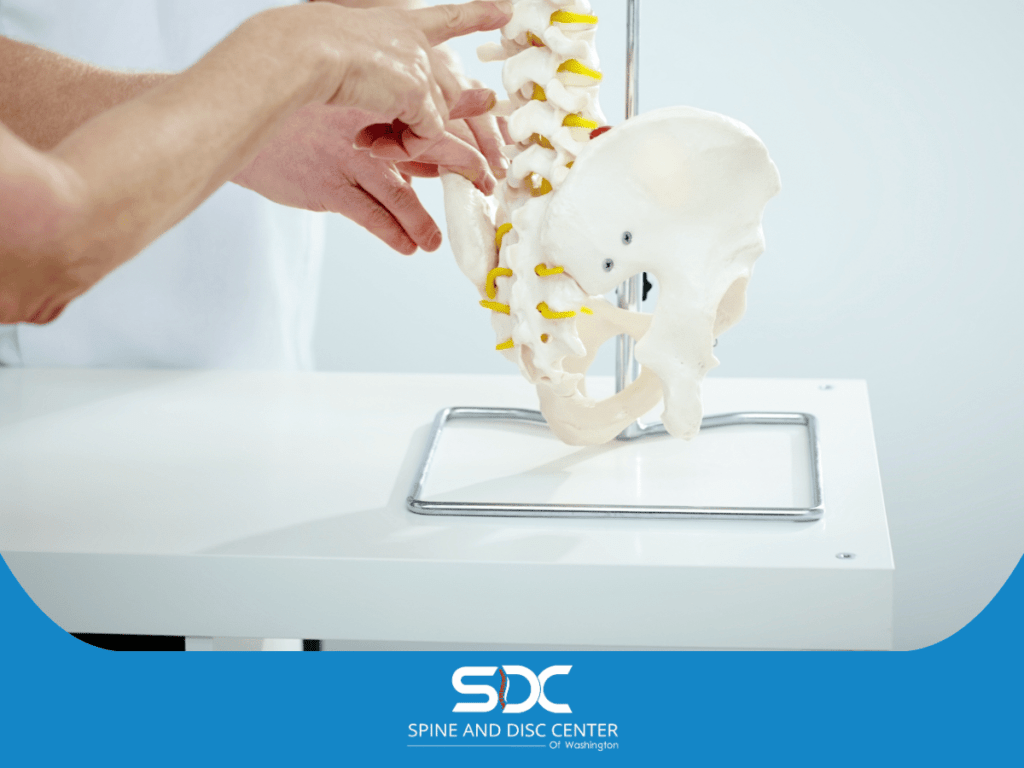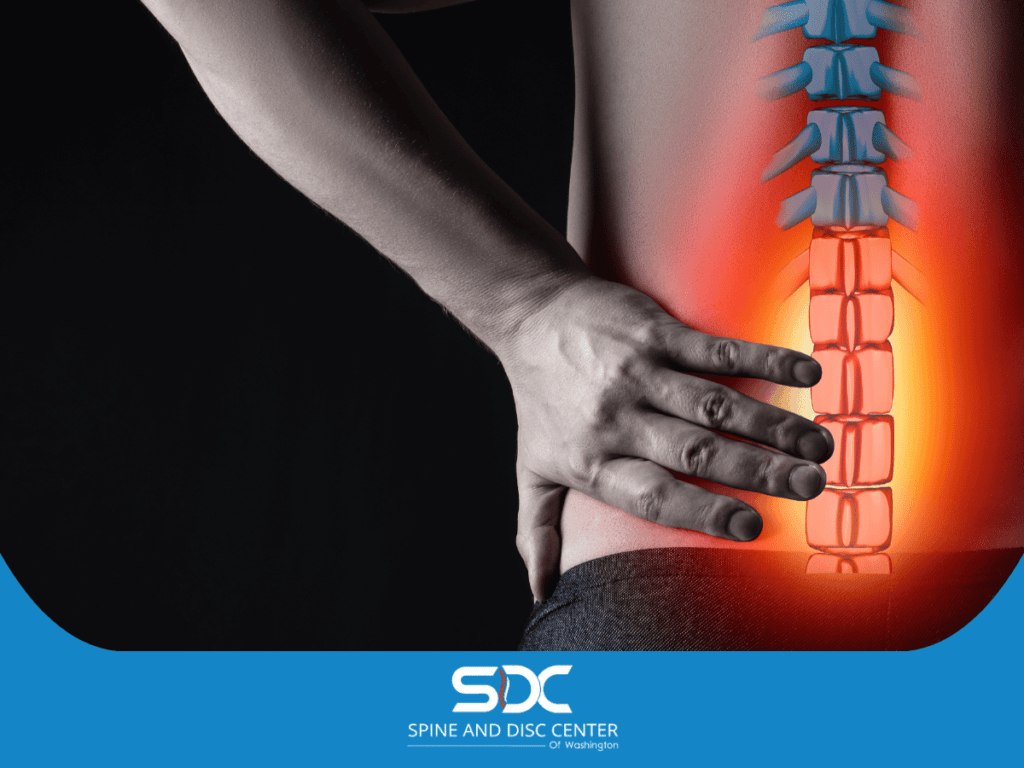Deep tissue laser therapy is an advanced form of laser therapy that has gained popularity for its effectiveness in providing pain relief and promoting healing, particularly for chronic pain conditions.
This therapy utilizes higher-power lasers to penetrate deeply into tissues, making it a powerful tool in the arsenal of treatments for various musculoskeletal and neuropathic pain conditions. The American Physical Therapy Association endorses laser therapy as a safe and effective treatment.
This comprehensive guide explores deep tissue laser therapy’s benefits, mechanisms, clinical evidence, and practical aspects.
Understanding Deep Tissue Laser Therapy
Deep tissue laser therapy involves using specific wavelengths of light delivered at higher intensities compared to low level laser therapy (LLLT).
The laser energy penetrates deep into the tissue structures, reaching areas that are typically difficult to treat with conventional therapies. Studies have shown that laser treatment is more effective in improving quality of life and reducing pain when compared with LLLT.
This deep penetration is crucial for addressing chronic pain conditions that affect deeper tissues, such as muscles, tendons, and ligaments.
The primary mechanism of action in deep tissue laser therapy is photobiomodulation, a process where light energy is absorbed by the cells and converted into biochemical energy. This stimulates various cellular processes that are essential for healing and pain relief.
How Deep Tissue Laser Therapy Works
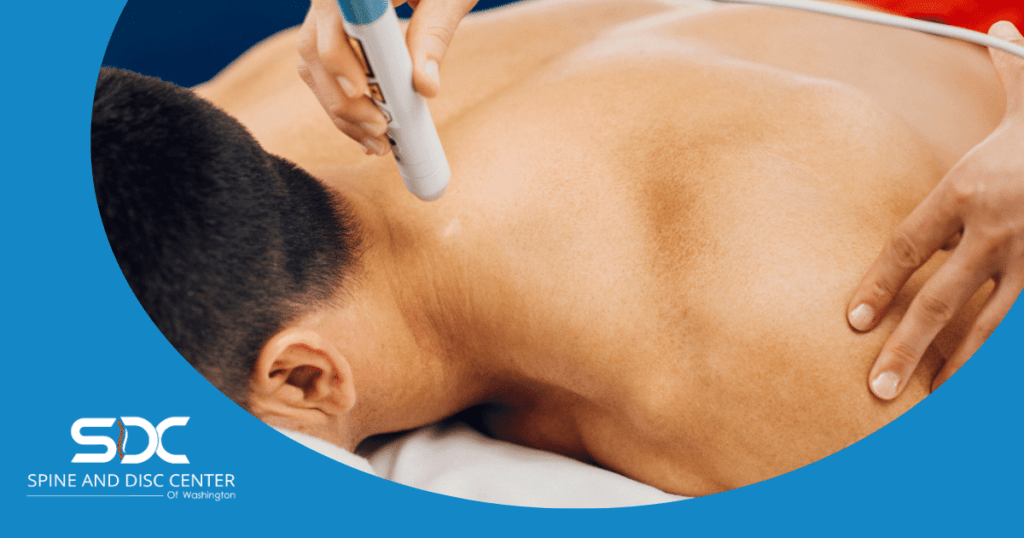
The effectiveness of deep tissue laser therapy lies in its ability to trigger a biological cascade of events at the cellular level. Here’s how it works:
- Increased Blood Flow: The laser energy dilates blood vessels and enhances local blood circulation. This increased blood supply delivers more oxygen and nutrients to the damaged tissues, facilitating repair and regeneration.
- Reduction of Inflammation: Deep tissue laser therapy reduces pro-inflammatory cytokines and increases anti-inflammatory cytokines, decreasing inflammation and associated pain.
- Stimulation of Cellular Activity: The laser stimulates the production of adenosine triphosphate (ATP), the primary energy carrier in cells. Enhanced ATP production accelerates cellular processes necessary for healing and relieving pain. These cellular activities collectively speed up the healing process by increasing cellular metabolism and reducing inflammation.
- Nerve Regeneration: The therapy promotes the growth of new nerve fibers, aiding in the repair of damaged nerves and improving nerve function.
- Collagen Production: Laser therapy increases collagen production, which is essential for tissue repair and regeneration.
These mechanisms collectively contribute to the clinical effectiveness of deep tissue laser therapy in managing pain and promoting healing.
Conditions Treated with Deep Tissue Laser Therapy
Deep tissue laser therapy is versatile and can be used to treat a wide range of conditions. Some of the most common conditions include:
- Chronic Pain: Conditions such as chronic back pain, neck pain, and shoulder pain can be effectively managed with deep-tissue laser therapy. It provides lasting relief for patients suffering from chronic pain conditions.
- Neuropathic Pain: This includes peripheral neuropathy, trigeminal neuralgia, and other nerve pain conditions.
- Sports Injuries: Athletes often suffer from injuries that affect deep tissues. Laser therapy can accelerate healing and reduce pain in conditions like sprains, strains, and tendonitis.
- Post-Surgical Pain: Laser therapy can help in reducing post-surgical pain and promoting faster recovery by enhancing tissue repair and reducing inflammation.
- Acute and Chronic Conditions: Conditions such as plantar fasciitis, low back pain, and arthritis respond well to deep tissue laser therapy.
Clinical Evidence and Research
The clinical effectiveness of deep tissue laser therapy is supported by numerous studies and clinical trials.
Here are some key findings from the research:
- Pain Reduction: A study published in the journal “Lasers in Surgery and Medicine” demonstrated significant pain reduction in patients receiving deep tissue laser therapy for chronic conditions. The therapy was found to be effective in reducing pain and improving function.
- Improved Function: Research published in the “Archives of Physical Medicine and Rehabilitation” highlighted the improvement in functional outcomes in patients treated with deep tissue laser therapy. Patients reported better mobility and reduced pain.
- Inflammation Reduction: Studies have shown that deep tissue laser therapy effectively reduces inflammation, making it a valuable treatment for conditions characterized by chronic inflammation.
- Wound Healing: The therapy has been found to promote wound healing by enhancing tissue repair and reducing inflammation. This makes it beneficial for patients recovering from surgeries or injuries.
Practical Aspects of Deep Tissue Laser Therapy
Deep tissue laser therapy is practical and convenient for patients. Treatment sessions are typically short, ranging from 15 to 30 minutes, depending on the severity of the condition.
Here’s what patients can expect:
- Session Duration: Each session lasts between 15 to 30 minutes. The number of sessions required depends on the condition being treated and the patient’s response to therapy.
- Non-Invasive and Painless: The therapy is non-invasive and painless. Patients may feel a soothing warmth during the treatment, which is a result of the laser energy penetrating the tissues. Many patients report enjoying the experience, especially when a massage ball treatment head is used, as it can result in a rapid decrease in pain, particularly for chronic pain sufferers.
- No Downtime: There is no downtime associated with deep tissue laser therapy. Patients can resume their normal activities immediately after the treatment.
- Multiple Sessions: Multiple sessions are often required to achieve optimal results. The frequency and number of sessions are tailored to the individual’s specific needs.
Mechanisms of Action in Deep Tissue Laser Therapy
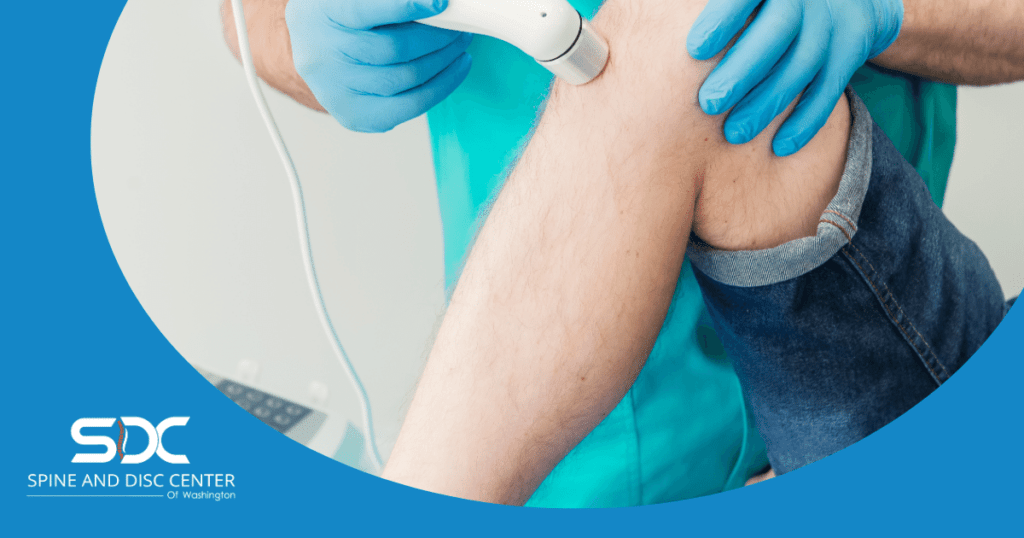
Understanding the cellular mechanisms is crucial to appreciating how deep tissue laser therapy promotes healing and pain relief:
- Photobiomodulation: The laser induces photobiomodulation, converting light energy into biochemical energy, which stimulates cellular repair and regeneration.
- ATP Production: Increased production of ATP accelerates cellular processes necessary for tissue repair and pain relief.
- Nitric Oxide Release: The therapy stimulates the release of nitric oxide, which dilates blood vessels and improves blood circulation.
- Collagen Production: Enhanced collagen production aids in tissue repair and regeneration.
- Anti-Inflammatory Effects: The therapy reduces pro-inflammatory cytokines and increases anti-inflammatory cytokines, decreasing inflammation and pain.
These mechanisms work together to provide significant therapeutic effects, making deep tissue laser therapy an effective treatment for various conditions. Combining deep tissue laser therapy with physical therapy can create comprehensive treatment plans that address both immediate pain relief and underlying issues.
Benefits of Deep Tissue Laser Therapy for Pain Relief
The benefits of deep tissue laser therapy are multifaceted, addressing both pain relief and healing:
- Significant Pain Reduction: Patients experience a marked reduction in pain, which improves their quality of life.
- Enhanced Healing: The therapy promotes tissue repair and regeneration, facilitating faster recovery from injuries and surgeries.
- Improved Function: Patients can regain mobility and function by reducing pain and inflammation.
- Non-Invasive Treatment: The therapy is a non surgical treatment, making it a safe alternative for pain management.
- Minimal Side Effects: Deep tissue laser therapy is associated with minimal side effects, making it a suitable option for many patients.
Safety and Considerations
While deep tissue laser therapy is generally safe and well-tolerated, it is important to consider potential risks and contraindications:
- Skin Sensitivity: Some patients may experience mild skin irritation or redness at the treatment site.
- Photosensitivity: Individuals with photosensitive conditions should consult their healthcare provider before undergoing laser therapy.
- Pregnancy: The safety of deep tissue laser therapy during pregnancy has not been fully established; pregnant women should seek medical advice.
- Pre-Existing Conditions: Patients with certain medical conditions, such as cancer or epilepsy, should discuss the suitability of laser therapy with their doctor.
Patients must undergo a thorough medical evaluation and provide informed written consent before starting deep tissue laser therapy to ensure that the treatment is appropriate and tailored to their specific needs.
Conclusion
Deep tissue laser therapy offers a powerful and promising treatment option for managing chronic pain and promoting healing. Its ability to penetrate deep tissue structures and stimulate cellular processes makes it valuable in treating various conditions, from sports injuries to neuropathic pain.
With a growing body of clinical evidence supporting its effectiveness, deep tissue laser therapy is becoming an increasingly popular choice among healthcare providers and patients alike.
Final Thoughts
This blog post is intended for informational purposes only and should not be blindly followed. It is not a substitute for professional medical advice, diagnosis, or treatment.
For personalized diagnostic and guidance tailored to your specific condition, please schedule an appointment with a qualified healthcare provider.

